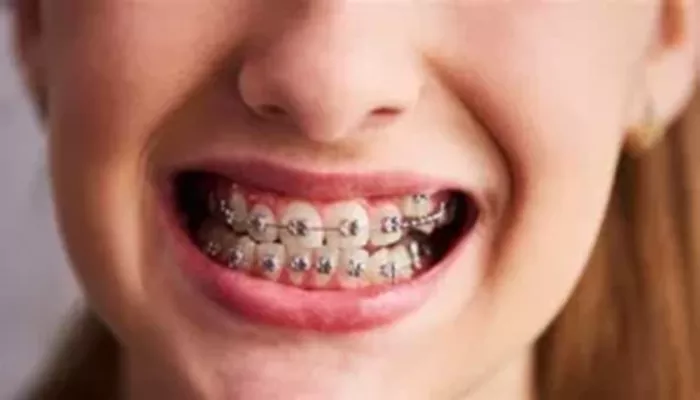Orthodontics, the branch of dentistry focused on correcting the alignment of teeth and jaws, has long been recognized for its ability to improve dental health and aesthetics. One common question among patients considering orthodontic treatment is whether braces can change the shape of the face. The answer to this question is multifaceted and involves understanding the interplay between teeth, jaws, and facial structures. This article aims to provide a detailed, science-based exploration of how braces can indeed influence facial shape, exploring the biological, anatomical, and aesthetic considerations involved.
Understanding the Anatomy and Physiology
Before diving into how braces can change facial shape, it’s essential to understand the basic anatomy and physiology involved. The face is composed of bones, muscles, teeth, and soft tissues, all working in harmony to create a person’s unique appearance. The jaws, specifically the maxilla (upper jaw) and mandible (lower jaw), play a crucial role in facial structure and function. Teeth are embedded in the jaws and are supported by bones and periodontal ligaments.
When teeth are misaligned, it can lead to imbalances in the facial structures. For instance, crowded teeth may cause the jaws to shift, leading to asymmetrical facial features. Similarly, overbites or underbites can affect the position of the lips and chin, altering the overall facial profile.
How Braces Work
Braces are appliances used to gradually move teeth into their correct positions. They work by applying controlled forces to the teeth and jaws, using brackets, wires, and elastics. Over time, as the teeth move, the bones and surrounding tissues adapt, leading to improved alignment and function.
There are several types of braces, including traditional metal braces, ceramic braces, and invisible aligners like Invisalign.
Each type has its own set of benefits and drawbacks, but they all share the same fundamental goal: to correct malocclusions (irregularities in tooth alignment).
The Influence on Facial Shape
Improvement in Dental Alignment
When teeth are crowded, gapped, or misaligned, it can create visual imperfections in the face. For example, crowded teeth may cause the lips to appear too full or uneven. Braces can correct these issues by aligning the teeth properly, which in turn improves the appearance of the lips and overall facial harmony.
Jaw Alignment
Malocclusions can also affect jaw alignment, leading to issues such as overbites, underbites, or crossbites. These conditions can cause the jaws to shift out of their natural positions, altering the facial profile. By correcting these jaw alignment issues, braces can restore a more balanced and symmetrical facial appearance.
Cheek and Chin Contour
The position of the teeth can also influence the contour of the cheeks and chin. For instance, when the teeth are properly aligned, the cheeks may appear more defined and the chin more prominent. Conversely, misaligned teeth can create a flat orrecessed cheek appearance and a weak chin profile. Braces can improve these facial features by moving the teeth into their correct positions, which in turn enhances the overall facial contour.
Soft Tissue Changes
In addition to changes in bone and tooth position, braces can also influence the soft tissues of the face. As the teeth move, the lips, cheeks, and muscles may adapt to the new positions, leading to subtle changes in facial appearance. These changes are often gradual and may not be immediately noticeable but can contribute to a more refined and balanced facial aesthetic over time.
Factors That Influence Facial Changes
While braces can indeed change the shape of the face, the degree of change can vary depending on several factors:
Severity of Malocclusion
The more severe the malocclusion, the more significant the facial changes may be. For instance, patients with severe overbites or underbites may experience more dramatic facial transformations after treatment compared to those with mild malocclusions.
Age of the Patient
Age is another important factor. Younger patients, particularly children and adolescents, have more plastic bones and tissues, which means they are more responsive to orthodontic treatment and may experience more significant facial changes. In contrast, adults may experience more limited facial changes due to the hardness of their bones and tissues.
Type of Braces
The type of braces used can also influence facial changes. For example, invisible aligners like Invisalign may be less likely to cause noticeable facial changes compared to traditional metal braces, as they apply gentler forces and are less invasive.
However, both types of braces can achieve similar dental and facial alignment results over time.
Compliance with Treatment
Patient compliance is crucial for successful orthodontic treatment and facial changes. Patients who wear their braces as instructed and attend regular appointments for adjustments are more likely to achieve optimal results and experience significant facial transformations.
Conclusion
In conclusion, braces can indeed change the shape of the face by correcting dental and jaw alignment issues and influencing the position of the lips, cheeks, and chin. While the degree of change can vary depending on factors such as the severity of malocclusion, age of the patient, type of braces used, and compliance with treatment, the overall goal of orthodontic treatment is to improve dental health and aesthetics, leading to a more balanced and harmonious facial appearance.
Related topics:

